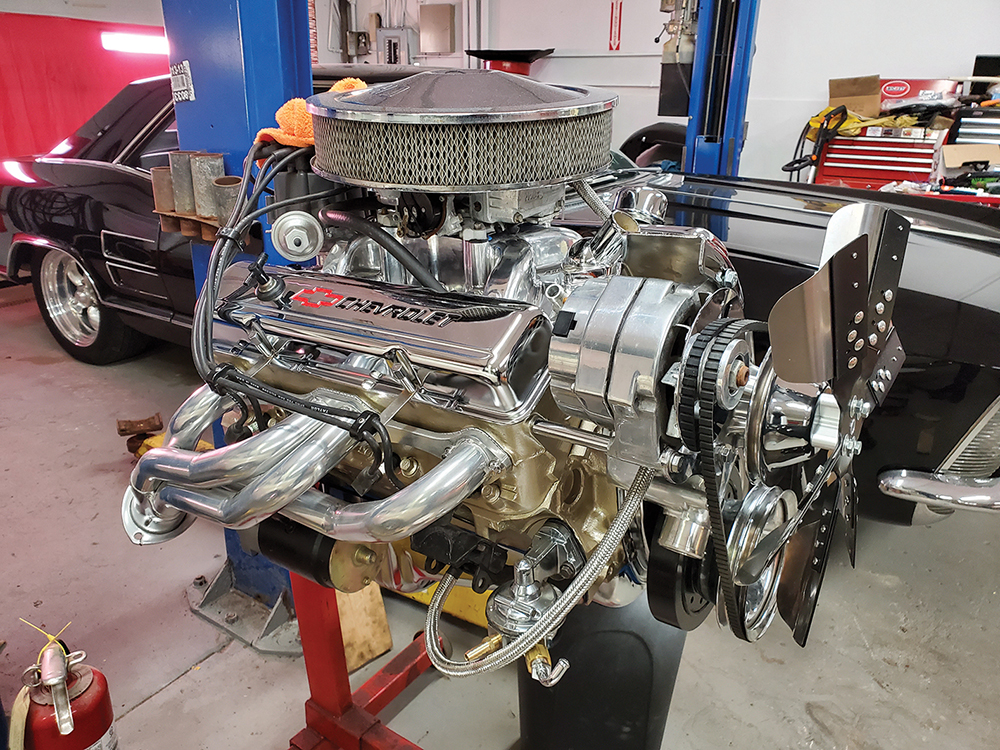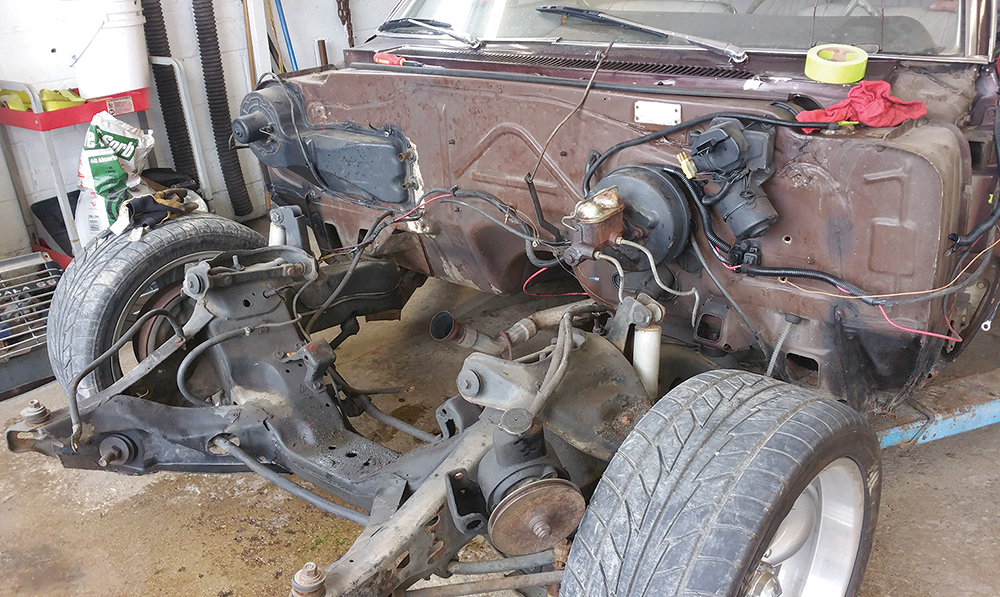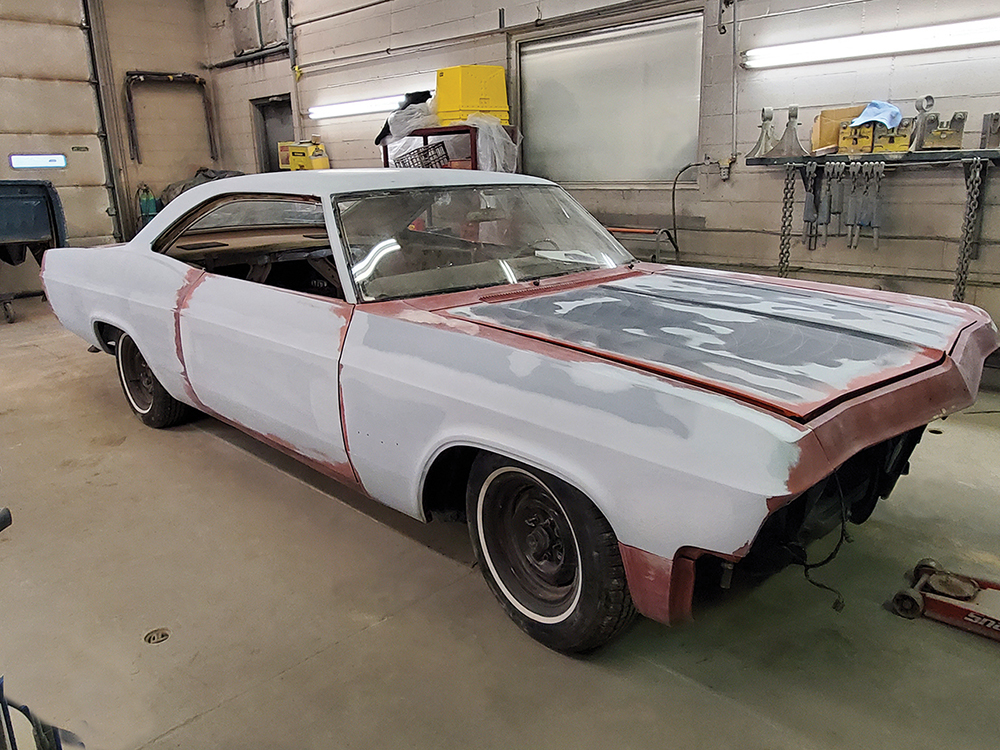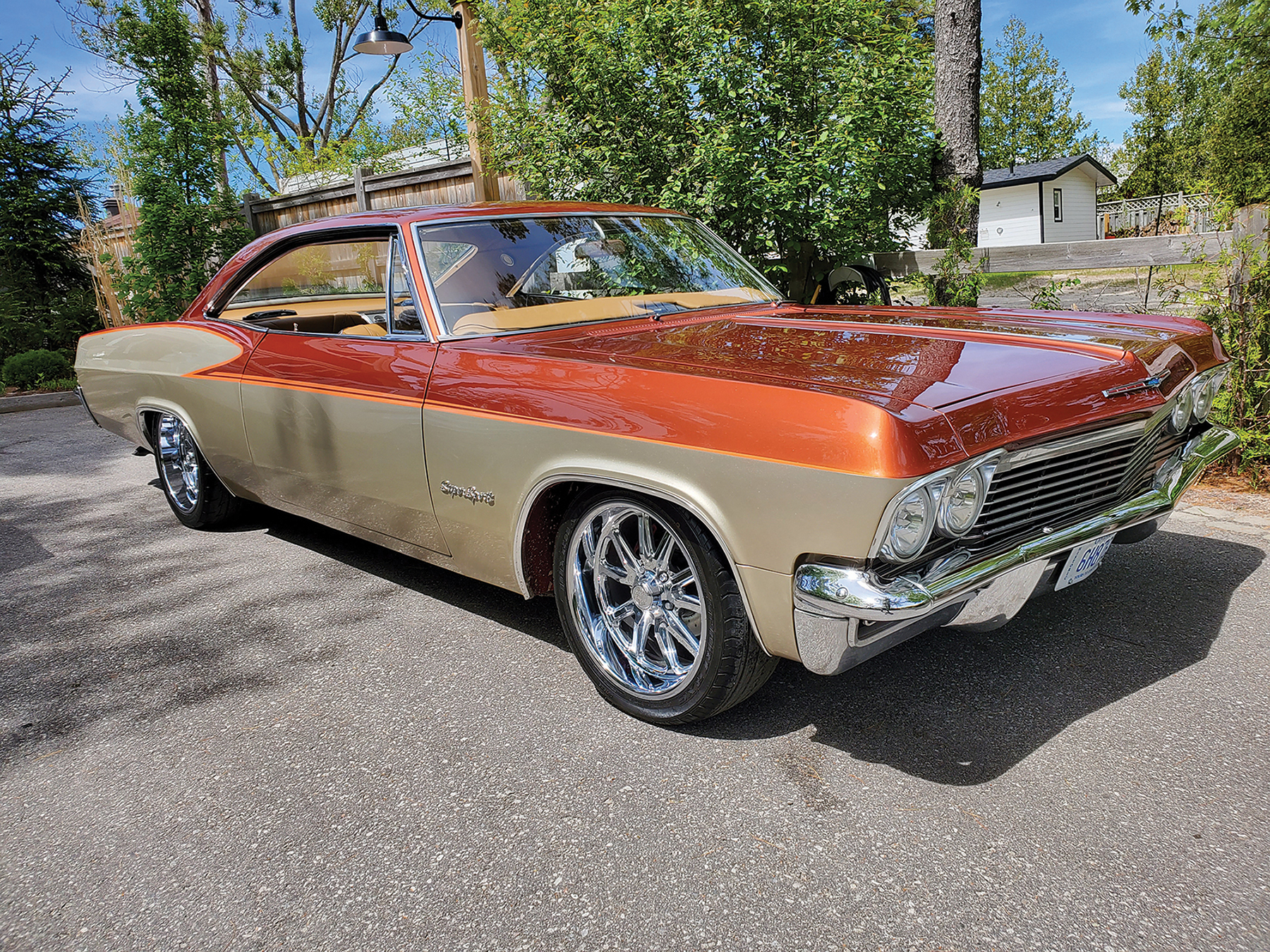The vision and passion behind the restoration of a classic Chevrolet.
by Roger Klein
He found it on Kijiji. Any reasonable person would have taken one look at the rusting car and written it off as a heap of worn out machinery. But Marty Frampton saw a classic and the potential for something nostalgic, powerful and beautiful.
Its round headlights, chrome bumpers and triangular vent windows were from a bygone era. The engine and transmission were both tired and leaking oil.
After a brief negotiation, Frampton bought the ‘65 Chevy Impala SS. He knew it would take years to restore the car, but the synapses in his brain started firing on all cylinders and he conjured a vision in his mind’s eye.
“I would wake up in the middle of the night thinking about the car. When my eyes were shut in bed, I could see that car three years before it was done. I could see what I was going to do with it, what colour I wanted, how I was going to do the paint scheme, what kind of wheels I wanted on it. I proceeded from there,” Frampton explains.
At this stage, the Impala’s hollow skeleton looked like a hopeless pile of scrap with boxes of parts on the side.
The Impala was stripped down. Its storied back seat, interior, engine and transmission were all yanked out. Its rusty metal was cut away to a new starting point. At this stage, the Impala’s hollow skeleton looked like a hopeless pile of scrap with boxes of parts on the side.
Yet, Frampton was undeterred. He’d been down this road before and knew that a project car like this would take countless hours of work and buckets of money before it would be roadworthy again.
“I’ve bought cars, my friends look at me and say, ‘What are you doing, that’s ridiculous’,” he chuckles.
It would also take special dedication to see it through to completion. Project cars often languish unfinished in garages and barns, caught between divorces and deathbeds, forever suspended in a dream state.
Tapping into a lifetime of experience working in the automotive industry, Frampton dug into the Impala, cutting, grinding and tracking down new parts.
“I know what to do, how to get those new chrome bumpers to put on the car, and I know where to research everything to get all of the parts and accomplish it,” he says.
Over the next four years, Frampton would spend three to five hours a day in the shop, sometimes making progress, sometimes just sitting and visualizing his next steps. Often visitors would stop by to talk cars.
Frampton’s love affair with cars started early, as it does with many young men. His first job was delivering parts to repair shops. He then became a professional detailer and trained Ford dealers nationwide in the art, before setting out on his own, buying and selling used cars.
Frampton finally settled in Stayner where he established Carsmart Canada, a used car lot that specialized in collectable and exotic cars. He has since closed the business and retired but he still maintains a soft spot for North American cars made in the 1960s. He says cars from the 1950s have become less popular as aging demographics drive trends in the collectible car market.
“My generation grew up with ‘60s cars, ‘60s and ‘70s. I know younger people that are into cars from the ‘80s. To me, who wants anything from the ‘80s? But in their age group, that’s what they grew up with and that’s what they find interesting.”
Housed in a steel garage south of Wasaga Beach. Frampton’s current collection includes a ’66 soft yellow Corvette convertible with a 427 under the hood and side exhaust, a tricked-out ‘67 Dodge Dart GT, a ’32 Ford Highboy Roadster and a customized ’59 Chevy Apache Pickup painted a zesty Lamborghini orange.
Nearly complete, the ’65 Impala SS is the latest addition. It’s similar to the ’63 his parents once owned but it’s all-new inside and out.
“It has a 350 GM engine with a four-speed automatic transmission, mild camshaft, headers and four-barrel carburetor.” Frampton goes on with the list of modifications he’s made to his dream machine over the past four years. Grinning like a proud father, he turns the key and fires up the engine to demonstrate the “exhaust cutout,” a gate that changes the sound of the engine from family sedan to a straight-pipe dragster at the flick of a switch. “People will hear you coming,” he chimes in.
Over the years Frampton has added his special touch to dozens of classic cars. He takes particular pride in hand-finishing the clear coats so that the car’s colours and curves glisten in the sunlight. It’s a lifelong passion that he enjoys sharing with friends who can appreciate the effort and artistry that go into creating a dream machine.
“‘Pride of ownership’ or whatever you want to call it—yeah, I love it when people come in and go, ‘Holy smokes, who picked the colours on that?’ Well, I did!”














